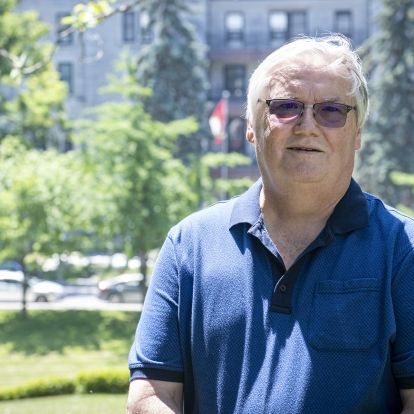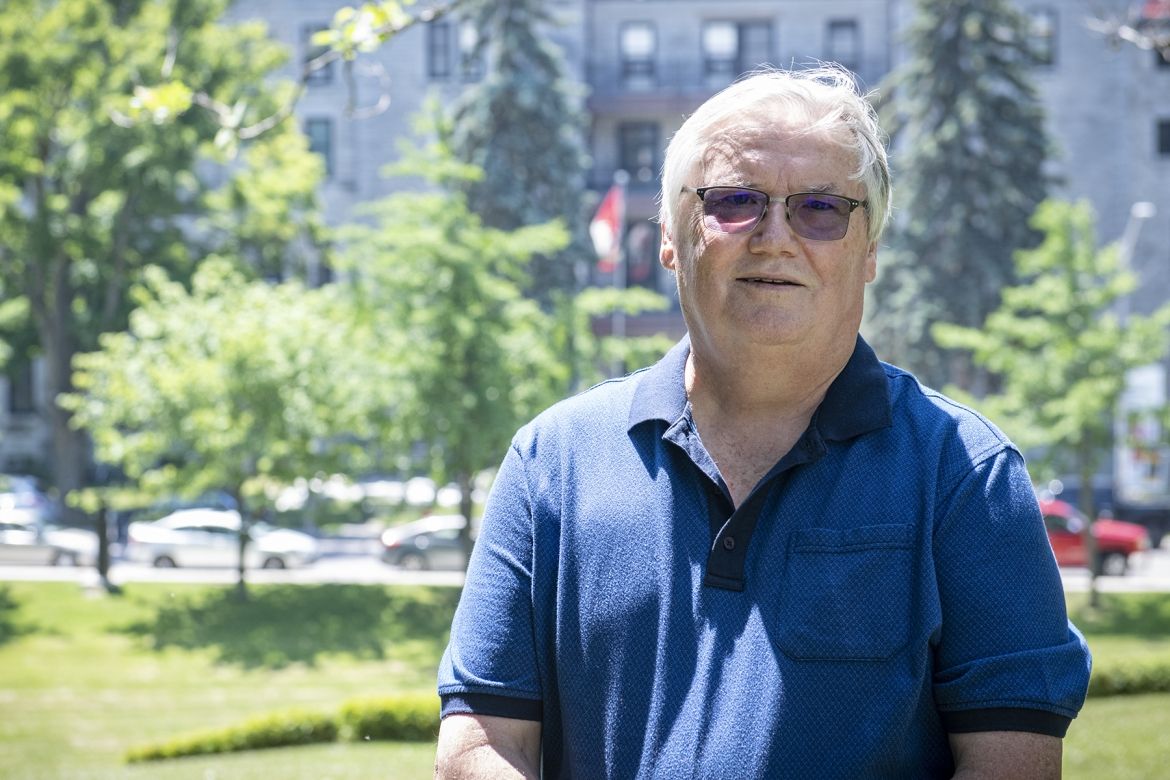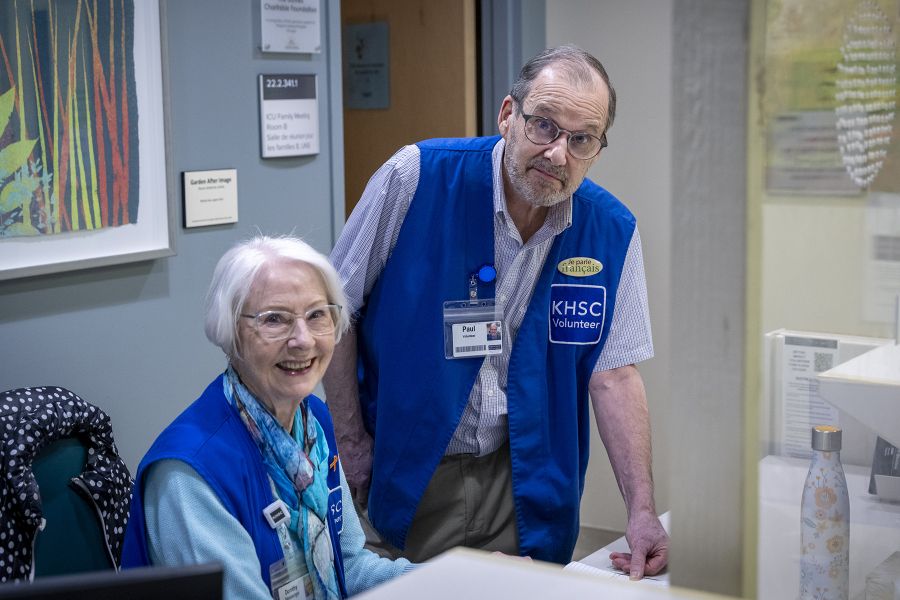Effective immediately masking is required for everyone when present on all inpatient units, in the Emergency Department (ED), the Urgent Care Centre (UCC), and the Children’s Outpatient Centre (COPC).

When Doug Duffy woke up on April 24, he was expecting to have a typical Saturday. He had taken the dog out and had just finished taking photos of recently acquired telephone memorabilia. Then – throwing the rest of his weekend plans out the window – he had a stroke, which is when a blood vessel that carries oxygen to the brain bursts or is blocked by a clot, causing brain cells to die without oxygen.
With the FAST acronym, recognizing the signs of stroke and knowing the action to take can save lives from significant disability. It saved Duffy’s life. FAST stands for Face – is it drooping? Arms – can you raise them? Speech – is it slurred or jumbled? And Time – to call 9-1-1 right away.
“Don’t drive yourself to the hospital,” says Dr. Shirin Jalini, a stroke neurologist at Kingston Health Sciences Centre (KHSC). “Paramedics know how stroke care is coordinated in the region and will ensure you get to the right location for the right care.”
Watch this video of Dr. Jalini explaining why it is important to act FAST.
Every minute counts, and the faster that blood and oxygen circulation can be restored, the greater the chances of recovery.
Duffy shares his road to recovery
Duffy experienced several mini strokes, that impaired his vision in one eye and made his hands feel numb temporarily, weeks before this big one:
8:30 a.m. – I was suddenly paralyzed on the right side and could not speak.
8:32 a.m. – My wife Janice called 9-1-1.
Within minutes – The Hastings Quinte Paramedic Services ambulance arrived.
9 a.m. – The Belleville General Hospital team took over my care and ran like a well-run Nascar pit-stop crew. A neurologist [from the Ontario Telestroke program] appeared via live video to assess me and review the CT scan images that showed the exact location of the clots. I was given the clot-busting drug tPA.
10 a.m. – I was on my way to KHSC’s Kingston General Hospital site, and by the time the ambulance passed Napanee on the 401, my right side and speech started to come back.
The team in Kingston readied for Duffy’s arrival. He came through KHSC’s emergency department and on to the interventional radiology suite where Dr. Ben Mussari provided Endovacular Treatment (EVT) to remove the stroke-causing clots from Duffy’s brain. A catheter angiogram helped Dr. Mussari to refine the assessment of the clot location and the blood vessels in the brain that were affected.
KHSC is one of 11 EVT centres in the province.
1 p.m. – I was in the Intensive Care Unit.
1:10 p.m. – I was on the phone with my wife assuring her I was OK.
“Fast forward to today, I’m back to 100 per cent thanks to the stroke teams at both sites and to the paramedics,” says Duffy. “I wish to thank every last one of you; you saved the quality of my life!”
“Mr. Duffy’s journey is a shining example of the better health outcomes that can be achieved for patients when stroke care is coordinated seamlessly throughout our region,” says Dr. Albert Jin, stroke neurologist and medical director of the Regional Stroke Centre at KHSC. “We are all very pleased with how well the health teams worked together to provide emergency medical care.”
Gallery


Doug Duffy received coordinated stroke care from the District Stroke Centre at QHC's Belleville General Hospital and from the Regional Stroke Centre at KHSC's Kingston General Hospital site, saving his quality of life.



